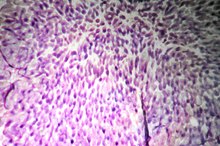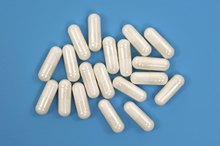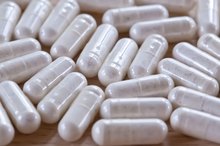Does Yogurt Help Digestion?
Your digestive tract contains living bacteria that are important in metabolic functions that support digestion, the digestive system and produce essential nutrients for your body. Keeping these bacteria in balance is essential to good health. Yogurt that contains probiotics helps your digestive system function properly. Probiotic yogurts are fermented dairy products that contain beneficial bacteria. Not all yogurts are considered probiotic, so check the label for the statement “live active cultures.”
Lactobacillus Acidophilus
Probiotic yogurts can contain a variety of live active bacteria cultures that aid in digestion. Lactobacillus acidophilus is one bacterium that aids digestion in the small intestine. Lactobacillus acidophilus also produces vitamin K, which is a fat-soluble vitamin that helps your blood clot, or coagulate. It has also been found to improve lactose digestion and reduce lactose intolerance symptoms.
Bifidobacterium Lactis
Which Yogurts Have Lots of Digestive Enzymes?
Learn More
Another beneficial bacteria in probiotic yogurt is bifidobacterium lactis, which improves digestive comfort. Bifidobacterium lactis helps your digestion and has been shown to reduce symptoms of irritable bowel syndrome, or IBS, according to a study headed by D. Guyonnet, published in the 2009 issue of the “Journal of Digestive Disease.” Bifidobacterium lactis also helps to prevent constipation and irregularity. Adding probiotic yogurt with a variety of live active cultures to your diet will aid digestion and may help prevent chronic intestinal disease.
Streptococcus Thermophilus
Streptococcus thermopohilus is another beneficial bacteria in probiotic yogurt. Streptococcus thermopohilus bacteria fight lactic acid bacterium that can impede proper digestion of your food. Streptococcus thermophilus soothes the stomach, which helps to reduce upset stomach and lactose intolerance. The beneficial effects in the digestive tract include improved lactose digestion, and reduce abdominal pain, diarrhea and flatulence from indigestion.
Live and Active Cultures Standards
Food With Lactobacillus
Learn More
Lactobacillus acidophilus, bifidobactium lactis and streptococcus thermophilus are the more common bacteria found in yogurt, but there are other strains of beneficial bacteria such as l. casei and l. rhamnosus that are also found in probiotic yogurts. In addition, the National Yogurt Association, or NYA, has established standards for the quantity of live and active cultures. Yogurt manufacturer’s products must contain at least 100 million cultures per gram at the time of manufacture; frozen yogurts must contain 10 million cultures per gram at the time manufacture. If the yogurt product contains these minimums, then the NYA Live and Active Cultures seal will be present on the label.
Related Articles
References
- Saudi Medical Journal: A Comparison Between Traditional Yogurt and Probiotic Yogurt inNon-Inflammatory Acute Gastroenteritis; F. Heydarian; 2010
- University of Maryland Medical Center: Vitamin K
- University of Maryland Medical Center: Lactobacillus Acidophilus
- Journal of Digestive Disease: Fermented Milk Containing Bifidobacterium Lactis DN-173 -010 Improved Self-ReportedDigestive Comfort Amonst a General Population of Adults
- BMC Pediatrics: Effect of the Consumption of a Fermented Dairy Product Containing Bifidobacterium Lactis DN-172 010 on constipation in Childhood
Resources
Writer Bio
Caroline Thompson is a professional photojournalist who has been working for print and online publications since 1999. Her work has appeared in the "Sacramento Bee," "People Magazine," "Newsweek" and other publications. She holds a Bachelor of Arts in photojournalism from California State University at Hayward and a personal trainer certification from the university's Health and Fitness Institute.









